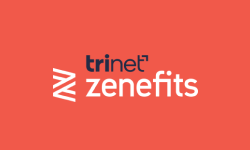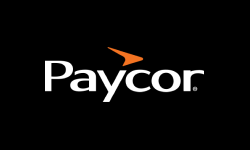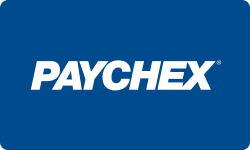Performance at a Glance
Are you looking for a reliable and efficient payroll management solution for your business? Look no further than QuickBooks Payroll! With its user-friendly interface, extensive features, and comprehensive support, QuickBooks Payroll has become a go-to solution for many businesses.
But don’t just take our word for it – let’s take a closer look at the performance of QuickBooks Payroll by examining its ratings from industry experts and customer reviews. Buckle up and get ready to see just how QuickBooks Payroll measures up!
| QuickBooks Payroll At Glance | |
| | It offers an intuitive and user-friendly interface for easy navigation and simplified accounting tasks. |
| | It provides comprehensive and helpful customer support options to assist with any issues or questions. |
| | It offers a wide range of features, including invoicing, expense tracking, and inventory management, to streamline business accounting processes. |
| | It has excellent customer support options, including phone, email, and chat support, to ensure that users receive timely assistance. |
| | QuickBooks can be expensive, but its extensive features and helpful support make it a valuable investment for businesses. |
Features of QuickBooks Payroll
When it comes to managing the payroll for your business, having the right tools at your disposal can make all the difference. QuickBooks Payroll is packed with features designed to streamline the payroll process and help ensure compliance with tax laws and regulations. From employee self-service portals to automated tax calculations and filing, QuickBooks Payroll has it all.
Let’s take a closer look at some of the most important features of QuickBooks Payroll. So, dive in and explore what QuickBooks Payroll has to offer!
| |
| |
Independent Contractor Payroll | |
| |
| |
| |
| |
| |
| |
Performance and Reliability | |
| |
| |
Significant Features of QuickBooks Payroll
Cloud-based
QuickBooks Payroll is a cloud-based payroll software solution that allows businesses to access their payroll data from anywhere with an internet connection. This feature of the software provides flexibility and accessibility to businesses, allowing them to manage payroll tasks on the go and from any device.
Automatic Updates
QuickBooks Payroll automatically updates with the latest tax rates and regulations, ensuring that businesses remain compliant with payroll laws and regulations. It saves businesses time and effort by eliminating the need for manual updates and reducing the risk of errors.
Multi-user Access
QuickBooks Payroll allows multiple users to access the software simultaneously, making it easy for businesses with multiple employees to manage payroll tasks. It ensures flexibility and collaboration, allowing different team members to work on payroll tasks simultaneously.
Customizable Payroll Items
QuickBooks Payroll allows businesses to customize payroll items, such as wages, deductions, and benefits, to fit their specific needs. This top-notch feature provides businesses with the flexibility to create payroll items that are unique to their business and help simplify the payroll process.
Time-tracking Integration
QuickBooks Payroll integrates with time tracking software, allowing businesses to automatically import employee hours and simplify the payroll process. This feature reduces the manual data entry required for payroll tasks and eliminates the risk of errors.
Mobile Access
QuickBooks Payroll offers mobile access, allowing businesses to manage payroll tasks on the go from their smartphones or tablets. It provides flexibility and accessibility to businesses, allowing them to manage payroll tasks from anywhere and at any time.
Automatic Tax Calculation
QuickBooks Payroll automatically calculates payroll taxes based on employee earnings and other factors, simplifying the tax filing process for businesses. It eliminates the need for manual tax calculations and reduces the risk of errors.
Customizable Reports
QuickBooks Payroll offers customizable reports that allow businesses to analyze payroll data and make informed decisions about their payroll processes. It provides businesses with insights into their payroll data, allowing them to identify areas for improvement and make informed decisions.
Automated Payroll Reminders
QuickBooks Payroll can send automated reminders to businesses when it’s time to run payroll, reducing the risk of missed paychecks or late payments. This feature of the software helps businesses stay on top of their payroll tasks and ensures that employees are paid on time.
Integration With QuickBooks Accounting Software
QuickBooks Payroll integrates seamlessly with QuickBooks’ accounting software, making it easy for businesses to manage their financial data in one place. It helps in eliminating the need for manual data entry and reduces the risk of errors, providing businesses with a streamlined payroll and accounting process.
How to Run Payroll in QuickBooks?
Running payroll is a critical task for any business, and it’s essential to do it accurately and efficiently. QuickBooks Payroll makes it easy to manage your payroll tasks, from calculating employee paychecks to filing taxes. We’ll walk you through the step-by-step process of running payroll in QuickBooks.
Step 1: Set up Your Payroll Account
The first step in running payroll in QuickBooks is to set up your payroll account. To do this, go to the “Employees tab” in QuickBooks and select the “Payroll Setup” option. Follow the prompts to enter your business and employee information, tax rates, and other payroll details.
Step 2: Add Employees to Your Payroll
Next, you’ll need to add your employees to your payroll account. To do this, go to the “Employees” tab and select the “Add Employee” option. Enter your employees’ information, including their names, addresses, Social Security numbers, and tax withholding information.
Step 3: Enter Employee Hours and Earnings
Once you’ve added your employees to your payroll account, you’ll need to enter their hours and earnings. To do this, go to the “Employees” tab and select the “Run Payroll” option. Select the employees you want to pay, and enter their hours and any additional earnings or deductions.
Step 4: Review and Approve Your Payroll
After entering employee hours and earnings, you’ll need to review and approve your payroll. QuickBooks Payroll will automatically calculate your payroll taxes and withholdings based on the information you entered. Review the payroll summary and ensure that everything looks accurate before approving it.
Step 5: Pay Your Employees
Once you’ve reviewed and approved your payroll, you’re ready to pay your employees. You can either print out paper checks or use QuickBooks Payroll’s direct deposit feature to pay your employees electronically.
Step 6: File Your Payroll Taxes
Finally, you’ll need to file your payroll taxes. QuickBooks Payroll will automatically calculate your payroll taxes and create the necessary forms for you to file. You can either file your taxes electronically or print out paper forms to mail to the appropriate tax agencies.
How to Use QuickBooks Online Payroll?
To use QuickBooks Online Payroll, you need to have a QuickBooks Online account. Once you have created an account and logged in, you can access the Payroll feature from the dashboard. From there, you can set up your payroll, add employees, and start processing paychecks.
Here’s a step-by-step guide on how to use QuickBooks Online Payroll:
Set up Your Payroll
In the Payroll section, click on the “Get Started” button to set up your payroll. You will need to enter your business information, tax ID number, and bank account details.
Add Employees
Once you have set up your payroll, you can add employees by clicking on the “Employees” tab and then clicking on the “Add an employee” button. You will need to enter their personal and employment information, including their name, address, social security number, and salary.
Set up Payroll Schedules
You can set up payroll schedules for your employees by clicking on the “Pay Schedules” tab and then clicking on the “Create Schedule” button. You can choose the pay frequency, the start date, and the end date for each payroll schedule.
Process Paychecks
To process paychecks for your employees, click on the “Pay Employees” tab and then select the employees you want to pay. You can choose to pay them by check or direct deposit. QuickBooks Online Payroll will calculate the taxes and deductions for each employee and generate a paycheck.
File Taxes
QuickBooks Online Payroll can help you file your payroll taxes and comply with tax regulations. You can file your federal and state payroll taxes, generate W-2 forms, and track your tax payments.
How Does QuickBooks Payroll Calculate Taxes?
QuickBooks Payroll uses the latest tax rates and regulations to calculate payroll taxes accurately. The software takes into account the employee’s gross pay, the number of allowances they claim, and any pre-tax deductions such as health insurance or retirement plans. QuickBooks Payroll also considers the employer’s contributions to Social Security, Medicare, and other taxes. Here are the steps involved in calculating taxes with QuickBooks Payroll:
Enter Employee Information
In QuickBooks Payroll, you need to enter your employees’ information such as their name, Social Security number, and filing status. You also need to enter their pay rate, pay frequency, and any pre-tax deductions they have.
Calculate Gross Pay
QuickBooks Payroll calculates an employee’s gross pay by multiplying their pay rate by the number of hours they worked. If the employee has any overtime pay or bonuses, those amounts are also included in the gross pay calculation.
Determine Tax Withholdings
QuickBooks Payroll determines an employee’s tax withholdings based on the information entered in step 1 and the current tax rates and regulations. The software considers federal income tax, Social Security tax, Medicare tax, and state and local taxes.
Calculate Employer Taxes
QuickBooks Payroll calculates the employer’s portion of taxes, including Social Security tax, Medicare tax, and federal and state unemployment taxes. The software also takes into account any additional taxes required by state or local regulations.
Generate Payroll Reports
QuickBooks Payroll generates payroll reports that show an employee’s gross pay, tax withholdings, and employer taxes. These reports can be used for tax filing and compliance purposes.
Top QuickBooks Payroll Alternatives Comparison
QuickBooks Payroll is a popular software for managing payroll processes, but it may not be the best fit for every business. Fortunately, there are many alternatives to QuickBooks Payroll on the market that offer similar features and functionalities.
Choosing the right payroll software can be overwhelming, especially with so many options to choose from. Comparing the top QuickBooks Payroll alternatives can help you make an informed decision about which software is best for your business.
| | | |
| | | |
| | | |
| Only for Premium and Elite plans | | Only if employees opt for Gusto Wallet |
| | | |
| Workers’ compensation insurance, health benefits, 401(k) | Workers’ compensation insurance, health insurance, 401(k) or other retirement plans | Health, wellness, retirement, transportation, housing and custom benefits |
| Expert product support, 24/7 chat, U.S. based phone support is available Monday through Friday from 6 a.m. to 6 p.m. PT and Saturday from 6 a.m. to 3 p.m. PT | Help center with guides, how-to GIFs and walk-throughs, 24/7 email and telephone support from 9 a.m. to 8 p.m. ET on weekdays | 24/7 online support center, email, chat, premium live support |
OnPay
OnPay is a cloud-based payroll and HR software designed for small and medium-sized businesses. It offers a full range of payroll and HR services, including tax filing, direct deposit, time tracking, benefits management, and HR compliance. OnPay is known for its intuitive user interface and affordable pricing.
Features:
- Unlimited pay runs and pay schedules
- Automated tax filing and payments
- Employee self-service portal
- Time tracking and PTO tracking
- Benefits administration
- HR compliance tools
- Integration with popular accounting software like QuickBooks and Xero
Pricing:
OnPay offers a flat monthly fee of $36 plus $4 per employee per month. There are no additional fees for tax filings, direct deposit, or other features.
Pros:
- Affordable pricing
- User-friendly interface
- Robust HR features
- Excellent customer support
Cons:
- Limited customization options
- No mobile app for Android devices
- No onboarding assistance
Gusto
Gusto is a popular payroll and HR software designed for small and medium-sized businesses. It offers a full suite of payroll and HR services, including tax filing, direct deposit, benefits administration, and compliance. Gusto is known for its user-friendly interface and extensive HR features.
Features:
- Automated tax filing and payments
- Direct deposit and paper check options
- Employee self-service portal
- Time tracking and PTO tracking
- Benefits administration
- HR compliance tools
- Integration with popular accounting software like QuickBooks and Xero
Pricing:
Gusto offers a tiered pricing model based on the number of employees. The pricing ranges from $19 per month for the basic plan to $149 per month for the complete plan. Additional fees may apply for some features.
Pros:
- User-friendly interface
- Robust HR features
- Excellent customer support
- Mobile app available for iOS and Android devices
Cons:
- Pricing can be higher for larger businesses
- Limited customization options
- Limited reporting options
Conclusion
QuickBooks Payroll is an exceptional payroll management solution that simplifies the complexities of payroll processing for businesses of all sizes. With its user-friendly interface and robust features, QuickBooks Payroll offers seamless integration with the wider QuickBooks ecosystem, enabling effortless management of employee data, tax calculations, and paycheck generation. Its automated functionalities streamline administrative tasks, ensuring accuracy and compliance with tax regulations. Additionally, the software provides valuable insights and reporting capabilities, empowering businesses to make informed decisions. QuickBooks Payroll is a reliable and comprehensive tool that optimizes payroll processes, saving time and resources while enhancing overall efficiency.
Frequently Asked Questions
-
Is QuickBooks Payroll Right for You or Your Business?
Determining if QuickBooks Payroll is the right choice for your business can be a tough decision, as there are several factors to consider. Here are some questions to help you determine if QuickBooks Payroll is the best fit for your business:
- How many employees do you have?
- Do you have complex payroll needs?
- How familiar are you with accounting and payroll software?
- What is your budget?
- Do you need additional HR services?
Ultimately, QuickBooks Payroll can be a great choice for businesses with basic payroll needs and a limited budget.
-
Is it Hard to Manage Payroll in QuickBooks?
No, it is not hard to do payroll in QuickBooks. The software is designed to be user-friendly and easy to use. It offers a range of features, such as automated tax calculations, direct deposit, and tax filing, that can simplify the payroll process for businesses.
QuickBooks Payroll also integrates seamlessly with QuickBooks’ accounting software, making it easy to manage your business’s finances and payroll in one place. The software also offers customer support and resources like tutorials and FAQs to help users navigate any issues that may arise during the payroll process.
-
How Secure is Online Banking Through QuickBooks?
Online banking through QuickBooks is generally considered secure, provided you take certain precautions to protect your sensitive information. QuickBooks Payroll uses advanced security measures, such as encryption and secure login credentials, to ensure your financial data is protected from unauthorized access.
However, there are several steps you can take to further enhance the security of your online banking through QuickBooks:
- Use a strong, unique password.
- Keep your software up to date.
- Enable two-factor authentication.
- Use a secure internet connection.
- Monitor your accounts regularly.
-
Does Intuit QuickBooks Payroll Support Integrations?
Yes, Intuit QuickBooks Payroll supports integrations with a variety of third-party software applications. Integrations can help streamline your payroll process and improve accuracy by automating data entry and reducing manual data entry errors.
-
Can QuickBooks Payroll Calculate Overtime?
Yes, QuickBooks Payroll can calculate overtime for hourly employees. The software offers automated calculations for both daily and weekly overtime, which can help save time and improve accuracy.
To set up overtime calculations in QuickBooks Payroll, you will need to input the employee’s hourly rate, the number of regular hours worked, and the number of overtime hours worked. The software will then automatically calculate the employee’s total pay, including any overtime pay.
In addition to calculating overtime pay, QuickBooks Payroll offers compliance with federal and state labor laws regarding overtime.
-
What Types of Payroll Does QuickBooks Support?
QuickBooks supports various types of payroll, including:
- Regular paychecks for salaried and hourly employees
- Payroll for contractors and freelancers
- Payroll for temporary or seasonal workers
- Commission-based payroll
- Bonus payroll
- Reimbursement payroll
- Vacation and sick time accrual tracking
- Payroll tax calculations and filings for federal and state taxes.

![Unlocking Ahrefs Premium: Get Ahrefs Premium Accounts [100% Free]](https://s44815.pcdn.co/wp-content/uploads/2023/10/Ahrefs-Free-Premium-accounts-2023-330x250.webp)



















